Lenovo ThinkBook 15 Gen 4 review – an IdeaPad that always wanted to look more professional
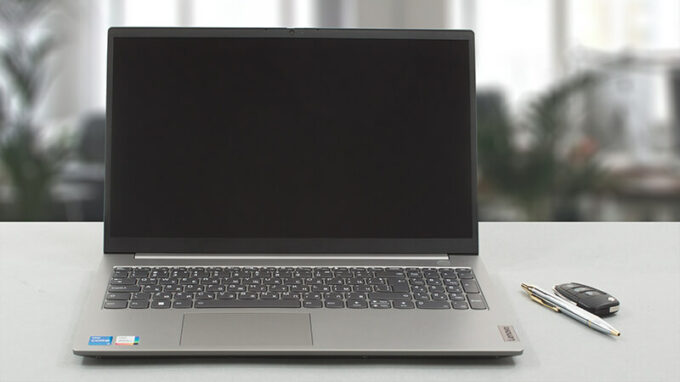 One of the youngest members of the Lenovo laptop family, the ThinkBook is here to get a certain group of people. Those, who need a secure business notebook, but have a foul opinion of the ThinkPad series. Those, who are repulsed by its “dated” look. A feature that has actually given it a huge fan group.
One of the youngest members of the Lenovo laptop family, the ThinkBook is here to get a certain group of people. Those, who need a secure business notebook, but have a foul opinion of the ThinkPad series. Those, who are repulsed by its “dated” look. A feature that has actually given it a huge fan group.
Well, on the bright side, the ThinkBook looks really sleek. Sharp lines and a two-tone Grey finish make the ThinkBook 15 Gen 4 a lot more appealing. However, looks would be meaningless if the laptop doesn’t perform up to the task.
This is why you get a choice of Alder Lake processors. If you need a more efficient machine, that will be quiet and will still deliver a decent amount of performance, then the U-series will be fine. However, if you need the grunt of a P-series processor and its higher TDP limits, then, choose accordingly.
Here, we expect to see a fantastic port selection, great input devices, and an overall experience, which will satisfy even the most rigorous users.
You can check the prices and configurations in our Specs System: https://laptopmedia.com/series/lenovo-thinkbook-15-gen-4-intel/
Contents
Specs Sheet
- HDD/SSD
- up to 4000GB SSD
- M.2 Slot
- 2x 2280 PCIe NVMe 4.0 x4 See photo
- RAM
- up to 40GB
- OS
- Windows 11 Pro, Windows 10 Pro, Windows 10 Home, Windows 11 Home
- Battery
- 45Wh, 45Wh, 3-cell
- Body material
- Plastic / Polycarbonate, Aluminum
- Dimensions
- 357 x 235 x 18.9 mm (14.06" x 9.25" x 0.74")
- Weight
- 1.70 kg (3.7 lbs)
- Ports and connectivity
- 1x USB Type-A
- 3.2 Gen 1 (5 Gbps)
- 1x USB Type-A
- 3.2 Gen 1 (5 Gbps), Sleep and Charge
- 1x USB Type-C
- 3.2 Gen 2 (10 Gbps), Power Delivery (PD), DisplayPort
- 1x USB Type-C
- 4.0, Thunderbolt 4, Power Delivery (PD), DisplayPort
- HDMI
- 2.0
- Card reader
- SD, SDHC, SDXC, MMC
- Ethernet LAN
- 10, 100, 1000 Mbit/s
- Wi-Fi
- 802.11ax
- Bluetooth
- 5.2
- Audio jack
- 3.5mm Combo Jack
- Features
- Fingerprint reader
- optional
- Web camera
- HD / FHD
- Backlit keyboard
- optional
- Microphone
- Dual Array Microphone with AI Noise Cancellation, switchable audio modes
- Speakers
- 2x 2W Stereo Speakers, Dolby Audio
- Optical drive
- Security Lock slot
- Kensington Nano Lock
All Lenovo ThinkBook 15 Gen 4 (Intel) configurations
What’s in the box?
Inside the box, we found some paperwork, the laptop itself, and a 65W USB Type-C wall adapter.
Design and construction
If you base your opinion on the ThinkBook 15 Gen 4 only on its visual representation, you will think that it is an IdeaPad that always wanted to look more professional. In a way, this perfectly represents what the ThinkBook family is.
This particular notebook has a profile of 18.9mm and weighs 1.70 kg. It comes with an aluminum lid, which is very resistant to flex, and a plastic base. Unfortunately, we can’t praise it the same way, due to its quite soft chassis.
Unfortunately, the lid can’t be opened with a single hand. On the bright side, the bezels around the matte display are not too thick. The top one even houses the Web camera and its privacy shutter. You get to choose between a 720p and a 1080p one.
When we look at the base, we see the power button, which sports one of those TikTok star selfie backlights. In addition, it doubles as a fingerprint reader on some models. Then, there is the keyboard itself. It has a backlight and is spill-resistant. Furthermore, it comes with a NumberPad, which is great. However, although it features clicky feedback, the key travel is just too short for our liking.
The touchpad is also not hyper-responsive. However, its Mylar surface makes the 70 by 105 mm surface a bit smoother. Moreover, its tracking is somewhat accurate-enough.
Now, turn the laptop upside down, and you will find the speaker cutouts, as well as the ventilation grill. Unsurprisingly, the heat exhaust happens through a vent on the back of the base.
Ports
On the left side, there is a USB Type-C 3.2 (Gen. 2) port with Power Delivery and DisplayPort support, a Thunderbolt 4 connector, followed by an HDMI connector, a USB Type-A 3.2 (Gen. 1) port, and an Audio jack. Then, on the right, there is a Kensington Nano security slot, a LAN port, another USB Type-A 3.2 (Gen. 1) port, and an SD card reader.
Disassembly, upgrade options and maintenance
To pop this laptop open, you need to undo a total of 10 Phillips-head screws. Then, pry the bottom panel, starting from the front. It is best to use a plastic tool.
Our configuration features the smaller 45Wh battery pack. It lasts for 7 hours of Web browsing, or 5 hours of video playback. To remove it, unplug it from the motherboard, and undo all three Phillips-head screws that keep it attached to the chassis.
This machine comes with 8GB of DDR4 RAM soldered to the motherboard. You can further expand it by up to 32GB via the single SODIMM slot. Storage-wise, there are two M.2 PCIe x4 slots, both of which support Gen 4 SSDs.
Respectively, the cooling comprises two heat pipes, a heat sink, and a fan. In addition, there is a heat spreader over the VRMs.
Display quality
Lenovo ThinkBook 15 Gen 4 in our configuration is equipped with a 60Hz Full HD IPS panel with model number LEN156FHD (LEN9052). Its diagonal is 15.6″ (39.62 cm), and the resolution is 1920 х 1080 pixels. The screen ratio is 16:9, and we are looking at a pixel density of – 142 ppi, and a pitch of 0.18 х 0.18 mm. The screen turns into Retina when viewed at distance equal to or greater than 60cm (24″) (from this distance one’s eye stops differentiating the separate pixels, and it is normal for looking at a laptop).
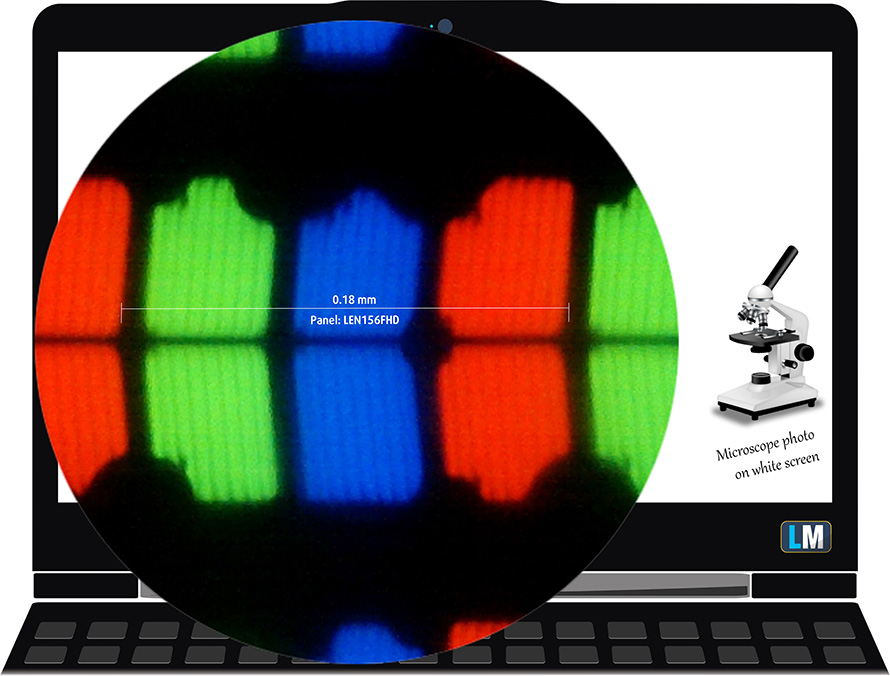
The viewing angles are excellent. We offer images at 45° to evaluate image quality.
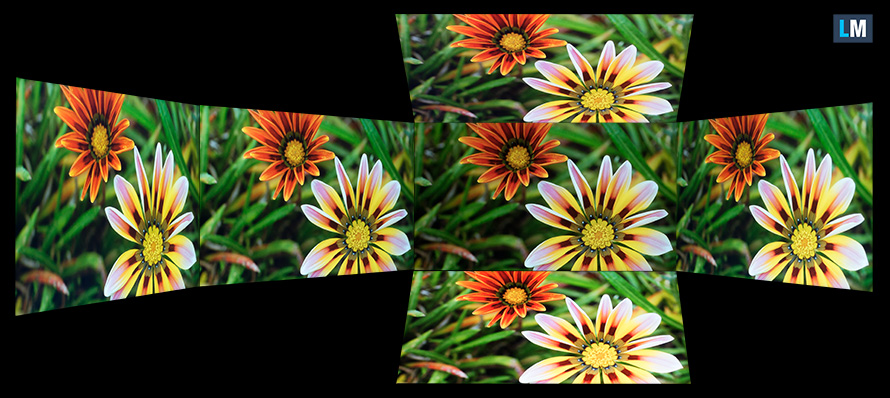
Also, a video with locked focus and exposure.
The measured maximum brightness of 342 nits in the middle of the screen and 332 nits as an average for the whole area, with a maximum deviation of 8%. The Correlated Color Temperature on a white screen is 6090K – slightly warmer than the sRGB standard of 6500K.
In the illustration below you can see how the display performs from a uniformity perspective. In other words, the leakage of light from the light source.
Values of dE2000 over 4.0 should not occur, and this parameter is one of the first you should check if you intend to use the laptop for color-sensitive work. The contrast ratio is very good – 1510:1.
To make sure we are on the same page, we would like to give you a little introduction to the sRGB color gamut and the Adobe RGB. To start, there’s the CIE 1976 Uniform Chromaticity Diagram that represents the visible specter of colors by the human eye, giving you a better perception of the color gamut coverage and the color accuracy.
Inside the black triangle, you will see the standard color gamut (sRGB) that is being used by millions of people on HDTV and the web. As for the Adobe RGB, this is used in professional cameras, monitors, etc for printing. Basically, colors inside the black triangle are used by everyone and this is the essential part of the color quality and color accuracy of a mainstream notebook.
Still, we’ve included other color spaces like the famous DCI-P3 standard used by movie studios, as well as the digital UHD Rec.2020 standard. Rec.2020, however, is still a thing of the future and it’s difficult for today’s displays to cover that well. We’ve also included the so-called Michael Pointer gamut, or Pointer’s gamut, which represents the colors that naturally occur around us every day.
The yellow dotted line shows Lenovo ThinkBook 15 Gen 4’s color gamut coverage.
Its display covers 50% of the sRGB/ITU-R BT.709 (web/HDTV standard) in CIE1976.
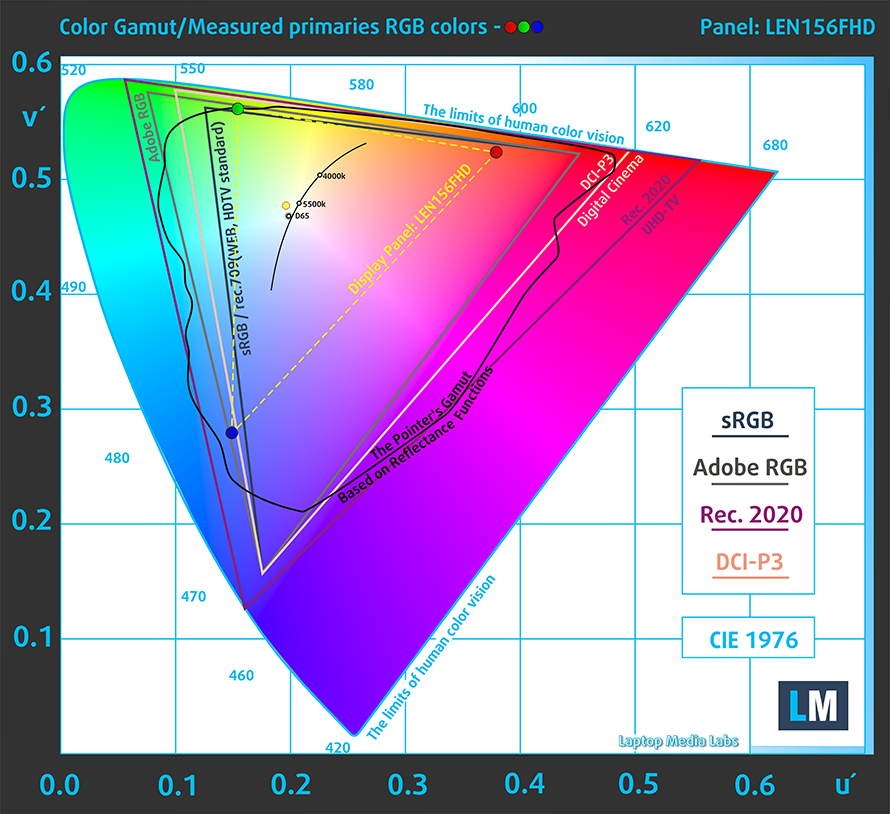
Our “Design and Gaming” profile delivers optimal color temperature (6500K) at 140 cd/m2 luminance and sRGB gamma mode.
We tested the accuracy of the display with 24 commonly used colors like light and dark human skin, blue sky, green grass, orange, etc. You can check out the results in factory condition and also, with the “Design and Gaming” profile.
Below you can compare the scores of the Lenovo ThinkBook 15 Gen 4 with the default settings (left), and with the “Gaming and Web design” profile (right).
The next figure shows how well the display is able to reproduce really dark parts of an image, which is essential when watching movies or playing games in low ambient light.
The left side of the image represents the display with stock settings, while the right one is with the “Gaming and Web Design” profile activated. On the horizontal axis, you will find the grayscale, and on the vertical axis – the luminance of the display. On the two graphs below you can easily check for yourself how your display handles the darkest nuances but keep in mind that this also depends on the settings of your current display, the calibration, the viewing angle, and the surrounding light conditions.

Response time (Gaming capabilities)
We test the reaction time of the pixels with the usual “black-to-white” and “white-to-black” method from 10% to 90% and vice versa.
We recorded Fall Time + Rise Time = 32 ms.
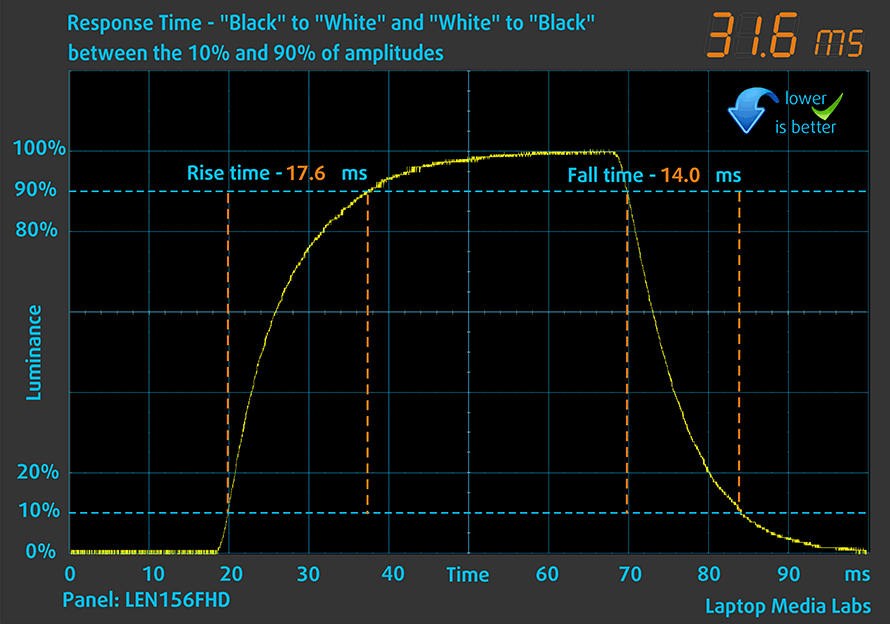
After that, we test the reaction time of the pixels with the usual “Gray-to-Gray” method from 50% White to 80% White and vice versa between 10% and 90% of the amplitude.
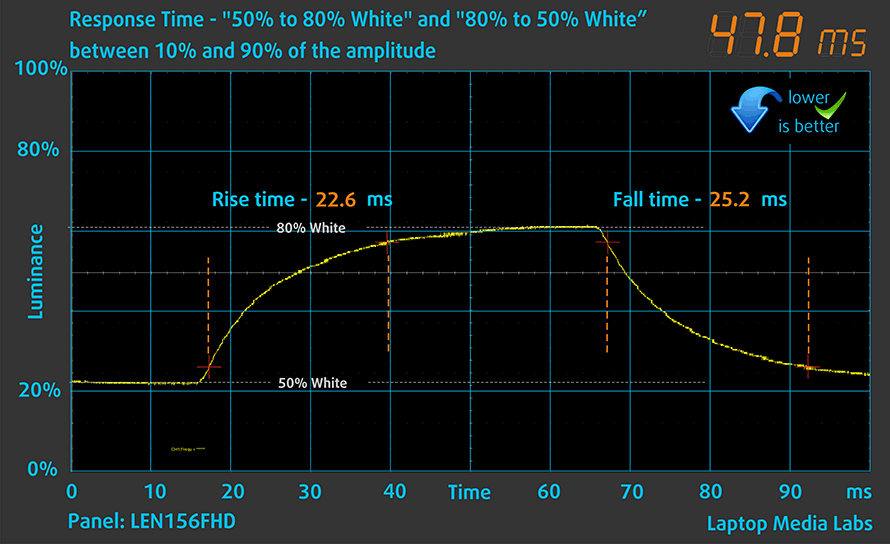
PWM (Screen flickering)
Pulse-width modulation (PWM) is an easy way to control monitor brightness. When you lower the brightness, the light intensity of the backlight is not lowered, but instead turned off and on by the electronics with a frequency indistinguishable to the human eye. In these light impulses, the light/no-light time ratio varies, while brightness remains unchanged, which is harmful to your eyes. You can read more about that in our dedicated article on PWM.
Lenovo ThinkBook 15 Gen 4’s display doesn’t use PWM to adjust its brightness levels at any point. This makes it comfortable for use during long work periods, without harming your eyes in this aspect.
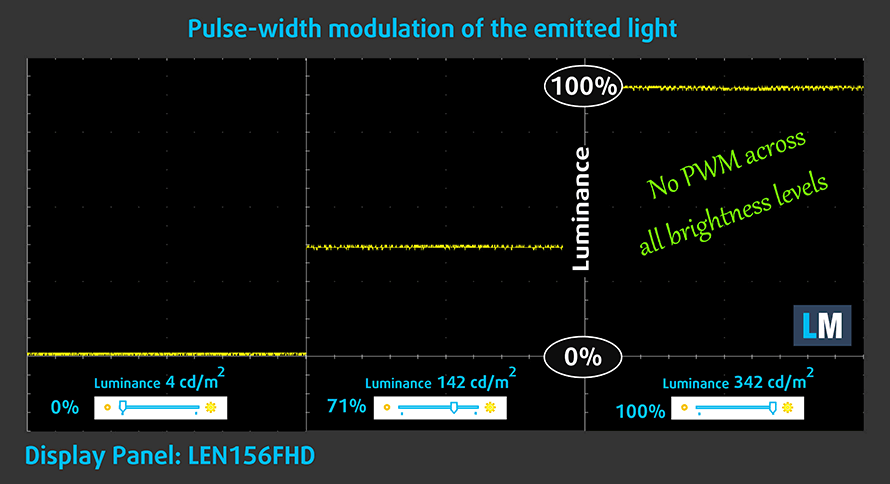
Blue light emissions
Installing our Health-Guard profile not only eliminates PWM but also reduces the harmful Blue Light emissions while keeping the colors of the screen perceptually accurate. If you’re not familiar with the Blue light, the TL;DR version is – emissions that negatively affect your eyes, skin, and your whole body. You can find more information about that in our dedicated article on Blue Light.
Gloss level measurement
Glossy-coated displays are sometimes inconvenient in high ambient light conditions. We show the level of reflection on the screen for the respective laptop when the display is turned off and the measurement angle is 60° (in this case, the result is 68.6 GU).
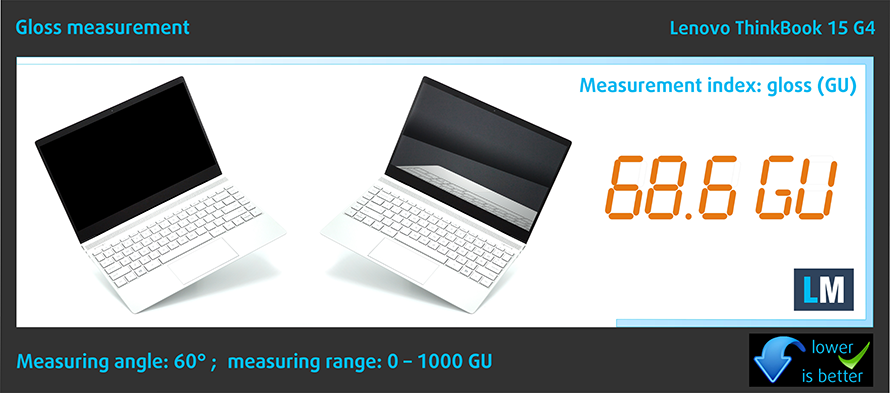
Buy our profiles
Since our profiles are tailored for each display model, this article and its respective profile package are meant for Lenovo ThinkBook 15 Gen 4 configurations with 15.6″ FHD IPS LEN156FHD (LEN9052).
*Should you have problems with downloading the purchased file, try using a different browser to open the link you’ll receive via e-mail. If the download target is a .php file instead of an archive, change the file extension to .zip or contact us at [email protected].
Read more about the profiles HERE.
In addition to receiving efficient and health-friendly profiles, by buying LaptopMedia's products you also support the development of our labs, where we test devices in order to produce the most objective reviews possible.

Office Work
Office Work should be used mostly by users who spend most of the time looking at pieces of text, tables or just surfing. This profile aims to deliver better distinctness and clarity by keeping a flat gamma curve (2.20), native color temperature and perceptually accurate colors.

Design and Gaming
This profile is aimed at designers who work with colors professionally, and for games and movies as well. Design and Gaming takes display panels to their limits, making them as accurate as possible in the sRGB IEC61966-2-1 standard for Web and HDTV, at white point D65.

Health-Guard
Health-Guard eliminates the harmful Pulse-Width Modulation (PWM) and reduces the negative Blue Light which affects our eyes and body. Since it’s custom tailored for every panel, it manages to keep the colors perceptually accurate. Health-Guard simulates paper so the pressure on the eyes is greatly reduced.
Get all 3 profiles with 33% discount
Sound
Lenovo ThinkBook 15 Gen 4’s speakers produce a sound of decent quality. Additionally, its low, mid, and high tones are clear of deviations.

Drivers
All drivers and utilities for this notebook can be found here: https://pcsupport.lenovo.com/us/en/products/laptops-and-netbooks/thinkbook-series/thinkbook-15-g4-iap/downloads
Battery
Now, we conduct the battery tests with Windows Better performance setting turned on, screen brightness adjusted to 120 nits and all other programs turned off except for the one we are testing the notebook with. Here, the 45Wh battery pack lasts for 6 hours and 47 minutes of Web browsing, or 5 hours and 16 minutes of video playback.
In order to simulate real-life conditions, we used our own script for automatic web browsing through over 70 websites.
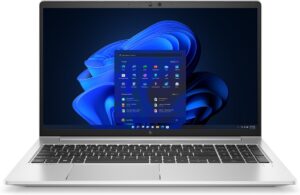
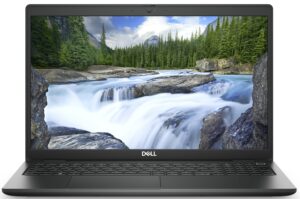
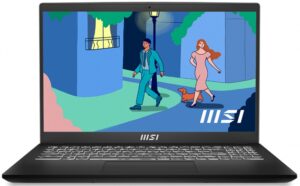
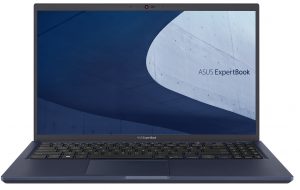

For every test like this, we use the same video in HD.





CPU options
You can choose between Alder Lake-U and Alder Lake-P CPUs. The options include the Core i3-1215U, Core i5-1235U, Core i7-1255U, Core i3-1220P, Core i5-1240P, and Core i7-1260P.
Results are from the Cinebench R23 CPU test (the higher the score, the better)
Results are from our Photoshop benchmark test (the lower the score, the better)
Lenovo ThinkBook 15 Gen 4 (Intel) CPU variants
Here you can see an approximate comparison between the CPUs that can be found in the Lenovo ThinkBook 15 Gen 4 (Intel) models on the market. This way you can decide for yourself which Lenovo ThinkBook 15 Gen 4 (Intel) model is the best bang for your buck.
Note: The chart shows the cheapest different CPU configurations so you should check what the other specifications of these laptops are by clicking on the laptop’s name / CPU.
Results are from the Cinebench R23 CPU test (the higher the score, the better)
Results are from our Photoshop benchmark test (the lower the score, the better)
GPU options
In addition to the integrated graphics cards, you can opt for a dedicated NVIDIA GeForce MX550 with 2GB of GDDR6 VRAM.
Results are from the 3DMark: Time Spy (Graphics) benchmark (higher the score, the better)
Results are from the 3DMark: Fire Strike (Graphics) benchmark (higher the score, the better)
Results are from the 3DMark: Wild Life benchmark (higher the score, the better)
Results are from the Unigine Superposition benchmark (higher the score, the better)
Lenovo ThinkBook 15 Gen 4 (Intel) GPU variants
Here you can see an approximate comparison between the GPUs that can be found in the Lenovo ThinkBook 15 Gen 4 (Intel) models on the market. This way you can decide for yourself which Lenovo ThinkBook 15 Gen 4 (Intel) model is the best bang for your buck.
Note: The chart shows the cheapest different GPU configurations so you should check what the other specifications of these laptops are by clicking on the laptop’s name / GPU.
Results are from the 3DMark: Time Spy (Graphics) benchmark (higher the score, the better)
Results are from the 3DMark: Fire Strike (Graphics) benchmark (higher the score, the better)
Results are from the 3DMark: Wild Life (Graphics) benchmark (higher the score, the better)
Results are from the Unigine Superposition benchmark (higher the score, the better)
Gaming tests
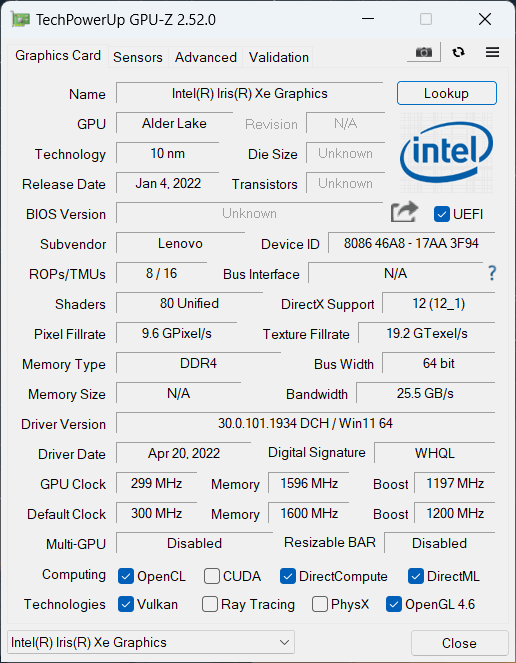

| CS:GO | HD 1080p, Low (Check settings) | HD 1080p, Medium (Check settings) | HD 1080p, MAX (Check settings) |
|---|---|---|---|
| Average FPS | 87 fps | 69 fps | 38 fps |

| DOTA 2 | HD 1080p, Low (Check settings) | HD 1080p, Normal (Check settings) | HD 1080p, High (Check settings) |
|---|---|---|---|
| Average FPS | 98 fps | 66 fps | 36 fps |
Temperatures and comfort
Max CPU load
In this test we use 100% on the CPU cores, monitoring their frequencies and chip temperature. The first column shows a computer’s reaction to a short load (2-10 seconds), the second column simulates a serious task (between 15 and 30 seconds), and the third column is a good indicator of how good the laptop is for long loads such as video rendering.
Average P-core frequency; Average E-core frequency; CPU temp.; Package Power
| Intel Core i5-1235U (15W TDP) | 0:02 – 0:10 sec | 0:15 – 0:30 sec | 10:00 – 15:00 min |
|---|---|---|---|
| Lenovo ThinkBook 15 Gen 4 | 2.55 GHz @ 2.32 GHz @ 60°C @ 32W | 2.51 GHz @ 2.30 GHz @ 66°C @ 32W | 2.40 GHz @ 2.20 GHz @ 65°C @ 28W |
| Microsoft Surface Laptop 5 (13.5″) | 3.35 GHz @ 2.84 GHz @ 69°C @ 44W | 3.27 GHz @ 2.78 GHz @ 80°C @ 42W | 2.24 GHz @ 2.17 GHz @ 71°C @ 22W |
| ASUS Vivobook 15 (X1502) | 2.91 GHz @ 2.49 GHz @ 78°C @ 39W | 2.62 GHz @ 2.37 GHz @ 81°C @ 33W | 2.30 GHz @ 2.19 GHz @ 68°C @ 27W |
| Acer TravelMate P2 (TMP215-54) | 3.67 GHz @ 3.09 GHz @ 90°C @ 55W | 2.83 GHz @ 2.55 GHz @ 85°C @ 33W | 2.59 GHz @ 2.44 GHz @ 84°C @ 28W |
| HP EliteBook 650 G9 | 3.26 GHz @ 2.80 GHz @ 89°C @ 45W | 2.63 GHz @ 2.39 GHz @ 91°C @ 32W | 2.25 GHz @ 2.15 GHz @ 79°C @ 24W |
| Dell Latitude 15 3530 | 2.97 GHz @ 2.60 GHz @ 87°C @ 34W | 2.64 GHz @ 2.43 GHz @ 88°C @ 30W | 2.37 GHz @ 2.29 GHz @ 80°C @ 25W |
| HP 470 G9 | 1.43 GHz @ 1.39 GHz @ 54°C @ 15W | 1.43 GHz @ 1.39 GHz @ 57°C @ 15W | 1.44 GHz @ 1.39 GHz @ 64°C @ 15W |
| HP EliteBook 640 G9 | 3.27 GHz @ 2.77 GHz @ 90°C @ 45W | 2.53 GHz @ 2.32 GHz @ 90°C @ 30W | 2.32 GHz @ 2.17 GHz @ 74°C @ 24W |
| HP EliteBook 840 G9 | 3.09 GHz @ 2.75 GHz @ 83°C @ 46W | 2.73 GHz @ 2.46 GHz @ 89°C @ 37W | 1.58 GHz @ 1.67 GHz @ 61°C @ 17W |
| Lenovo ThinkPad E14 Gen 4 | 3.28 GHz @ 2.77 GHz @ 84°C @ 44W | 3.18 GHz @ 2.77 GHz @ 90°C @ 44W | 2.49 GHz @ 2.28 GHz @ 77°C @ 28W |
| HP Pavilion Plus 14 (14-eh0000) | 2.85 GHz @ 2.43 GHz @ 77°C @ 39W | 2.34 GHz @ 2.10 GHz @ 75°C @ 29W | 1.84 GHz @ 1.79 GHz @ 65°C @ 20W |
| Lenovo IdeaPad 5 (15″, 2022) | 3.60 GHz @ 3.08 GHz @ 73°C @ 55W | 3.44 GHz @ 2.95 GHz @ 88°C @ 51W | 2.80 GHz @ 2.49 GHz @ 69°C @ 35W |
| Lenovo ThinkPad L14 Gen 3 | 3.20 GHz @ 2.77 GHz @ 83°C @ 44W | 3.10 GHz @ 2.71 GHz @ 94°C @ 43W | 1.89 GHz @ 1.95 GHz @ 72°C @ 20W |
| Acer Aspire Vero (AV14-51) | 3.63 GHz @ 2.87 GHz @ 84°C @ 55W | 2.73 GHz @ 2.36 GHz @ 81°C @ 33W | 2.49 GHz @ 2.23 GHz @ 79°C @ 28W |
| MSI Modern 14 (C12M) | 3.17 GHz @ 2.69 GHz @ 77°C @ 45W | 3.10 GHz @ 2.61 GHz @ 81°C @ 45W | 2.69 GHz @ 2.45 GHz @ 78°C @ 35W |
| Dell Latitude 15 5530 | 3.57 GHz @ 3.02 GHz @ 94°C @ 52W | 2.03 GHz @ 2.09 GHz @ 76°C @ 21W | 2.24 GHz @ 2.19 GHz @ 64°C @ 23W |
Interestingly, despite the super low temperature, the ThinkBook 15 Gen 4 doesn’t want to boost the Core i5-1235U any higher than 2.55 GHz. However, the experience is quiet, and the laptop still manages to maintain a TDP of 28W. Even though the processor is rated at 15W.
Comfort during full load
As we said, the noise levels are moderate, while the warmest spot on the keyboard is barely close to 37°C. This makes the worrying about the unfavorable position of the spot (around the “WASD” buttons) rather meaningless.
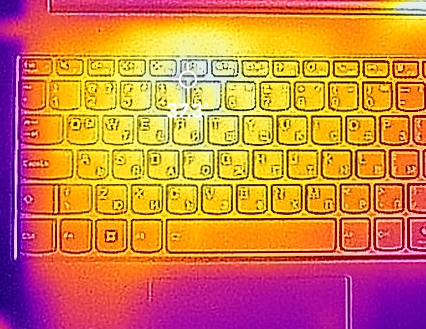
Verdict
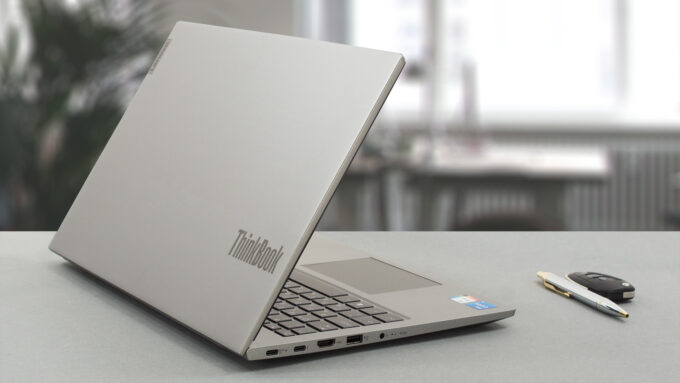 So, Lenovo has done a good job in the main department – security. The ThinkBook 15 Gen 4 features a firmware TPM 2.0, as well as a privacy shutter, and a fingerprint reader. The Kensington Nano slot, on the other hand, will help you protect your device from theft.
So, Lenovo has done a good job in the main department – security. The ThinkBook 15 Gen 4 features a firmware TPM 2.0, as well as a privacy shutter, and a fingerprint reader. The Kensington Nano slot, on the other hand, will help you protect your device from theft.
In addition to that, the machine is equipped with a very good port selection. It charges via a USB Type-C 3.2 (Gen. 2) port, while there is a Thunderbolt 4 connector, an SD card reader, two USB Type-A 3.2 (Gen. 1) ports, a LAN port, an HDMI connector, and more.
Lenovo ThinkBook 15 Gen 4’s IPS panel has a Full HD resolution, comfortable viewing angles, and a good contrast ratio. It doesn’t use PWM for brightness adjustment, but it has a limited color coverage – 50% of the sRGB color gamut. This makes the image less vibrant.
In addition to that, there is a touchscreen panel option, as well as a 100% sRGB one. However, you should be aware of a 1080p TN impostor, which you should avoid at any cost.
A quick peek on the inside reveals one SODIMM slot for up to 40GB of memory in total (together with the 8GB soldered to the motherboard). Not only that but there are two M.2 PCIe x4 slots, which support Gen 4 SSDs.
That’s wicked! Unfortunately, the smaller 45Wh battery pack is not too good. We got less than 7 hours of Web browsing or about 5 hours of video playback on a single charge. Considering the 15W CPU on the inside, we are left dissatisfied with the results.
The build quality is also okay, but the base is a bit bendy. Probably because of the plastic body. Interestingly, the keyboard left us with mixed feelings. It has a backlight and it’s spill-resistant. However, the key travel is super short. This is exactly the opposite of what we’re used to seeing on ThinkPads, which is a huge argument against the ThinkBooks.
At the end of the day, the ThinkPad E15 Gen 4 is a very similar product, that is better built, and in our opinion – is the better bang for the buck in the business world.
You can check the prices and configurations in our Specs System: https://laptopmedia.com/series/lenovo-thinkbook-15-gen-4-intel/
Pros
- Adequate price tag
- 1x SODIMM + 2x M.2 PCIe x4 Gen 4 slots
- Thunderbolt 4 and Wi-Fi 6 connections + SD card reader on board
- The power button is equipped with an optional fingerprint reader
- Sustains the larger 28W power limit
- Doesn’t use PWM for brightness adjustment (LEN156FHD (LEN9052))
- It has comfortable viewing angles and a good contrast ratio (LEN156FHD (LEN9052))
Cons
- Build quality is not the best
- Unsatisfactory iGPU performance
- Average battery life
- Covers only 50% of sRGB (LEN156FHD (LEN9052))
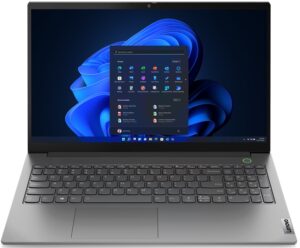
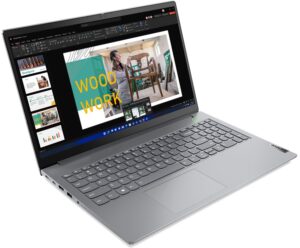
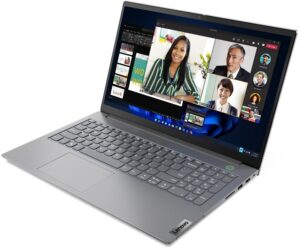
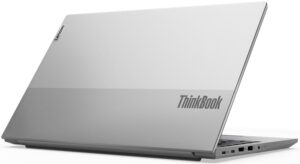
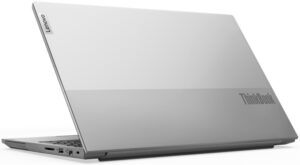
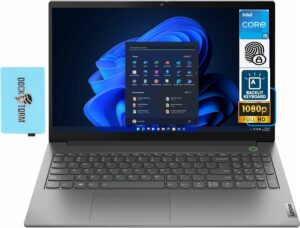
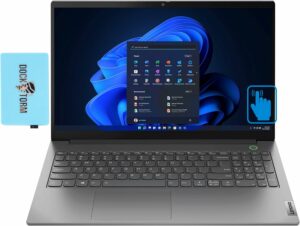
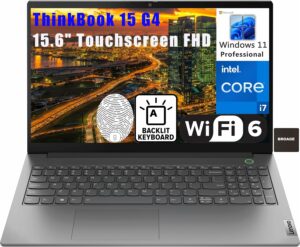


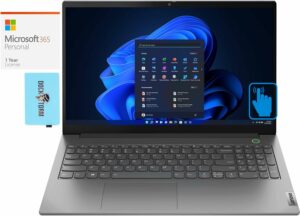


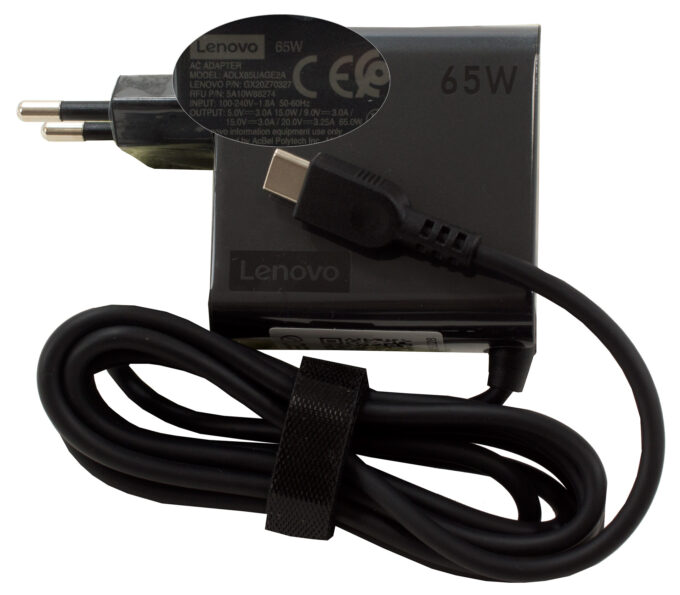
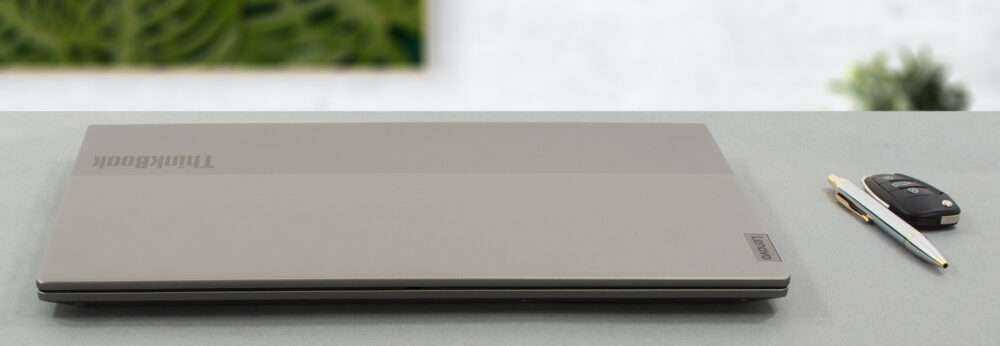
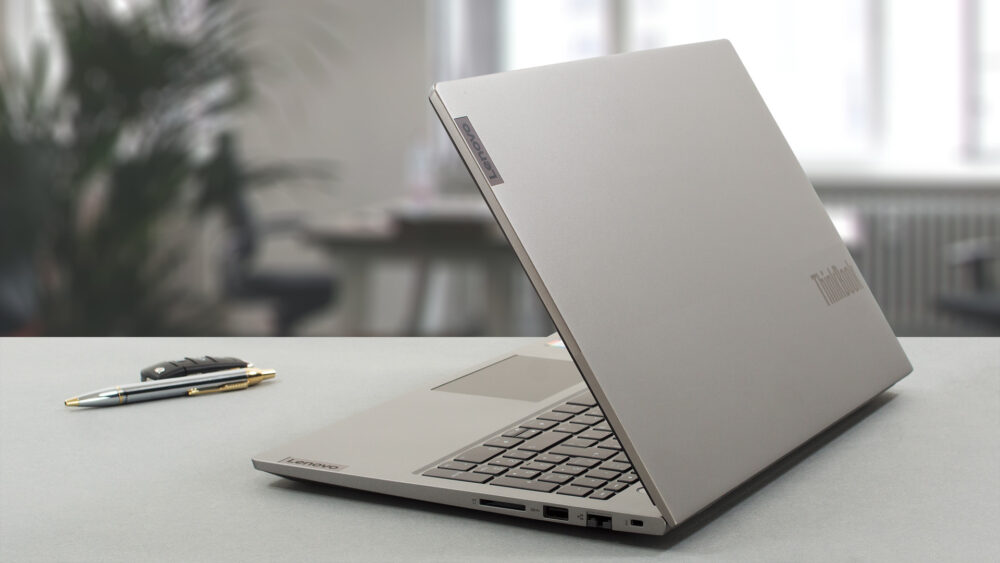
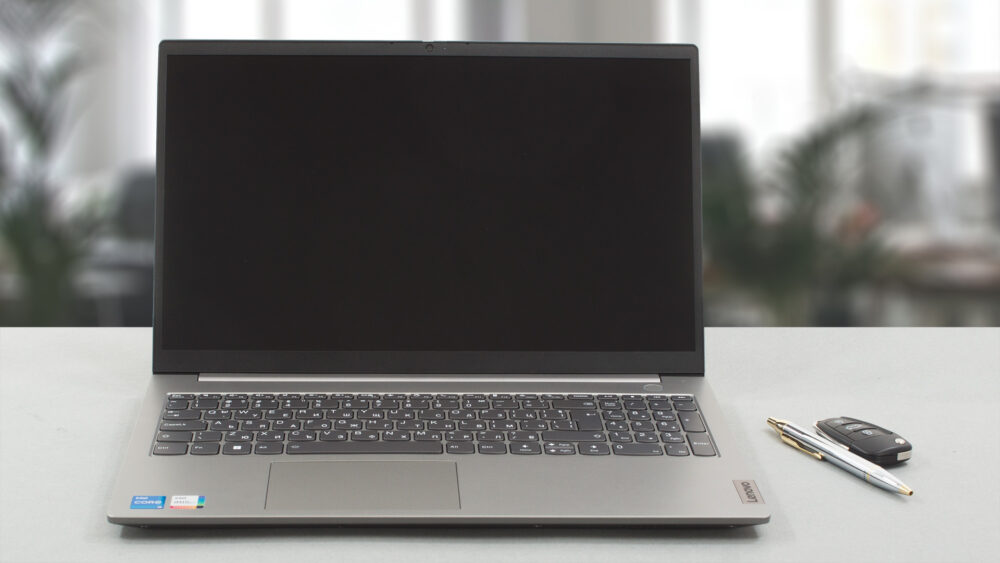
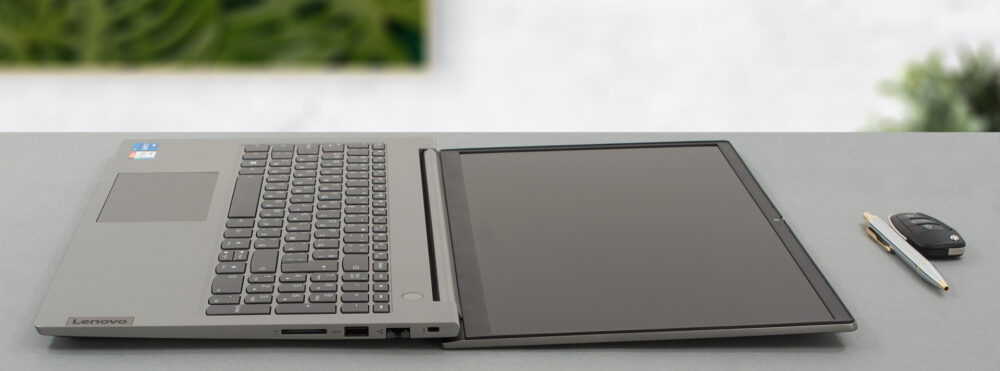
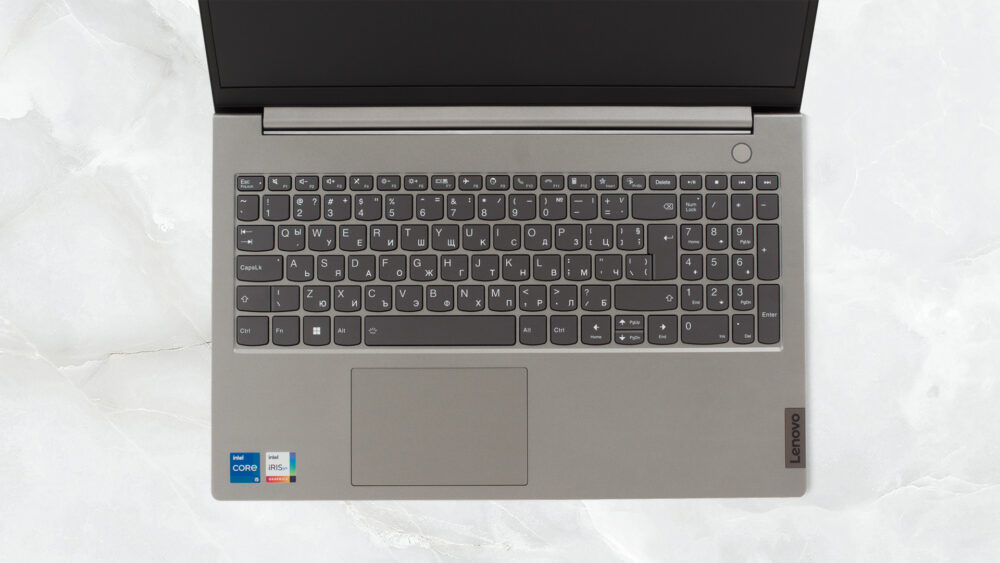



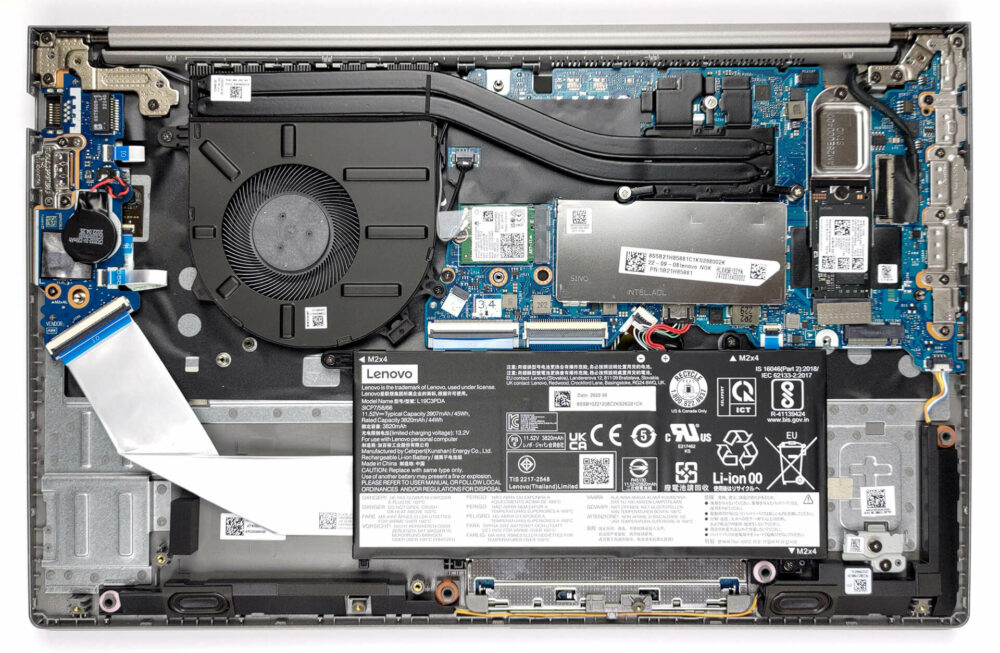
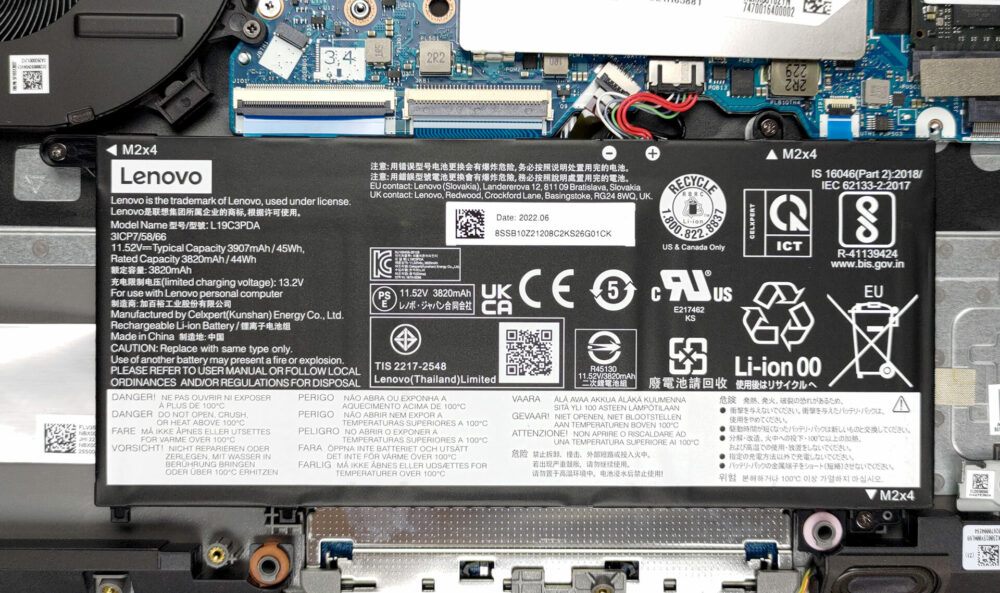
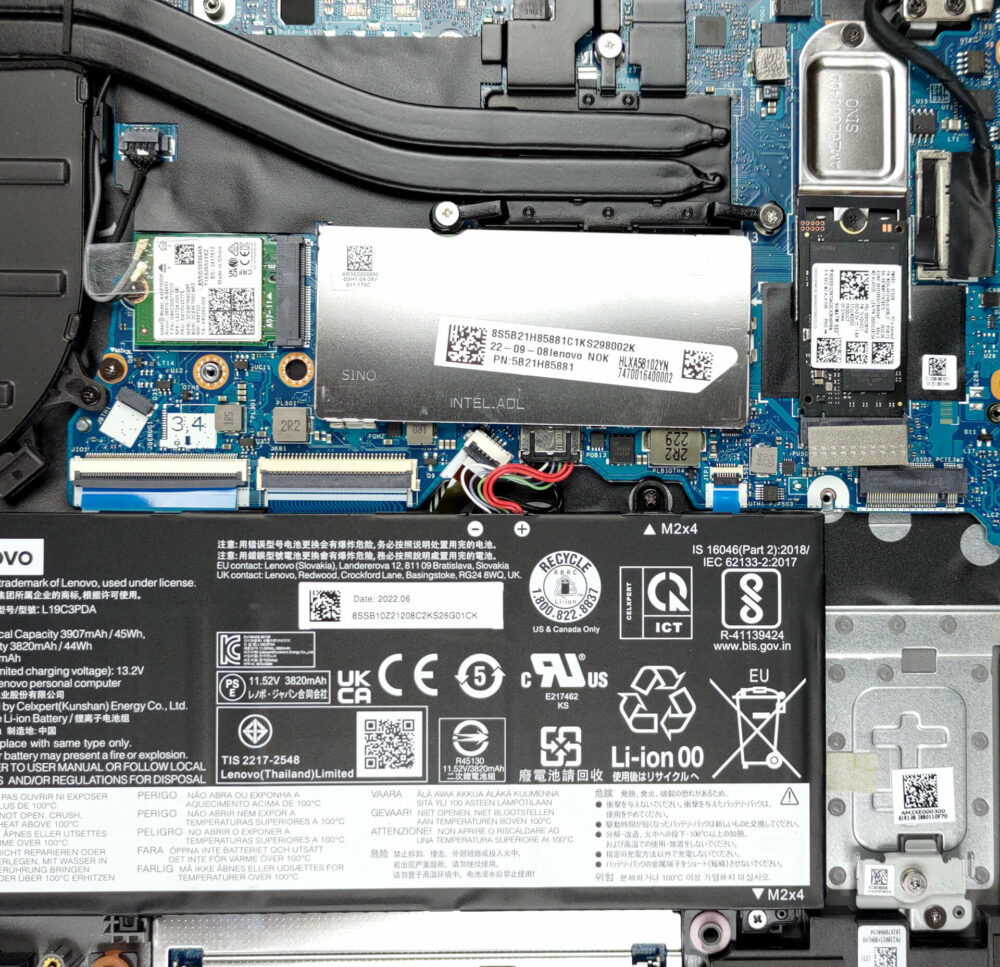
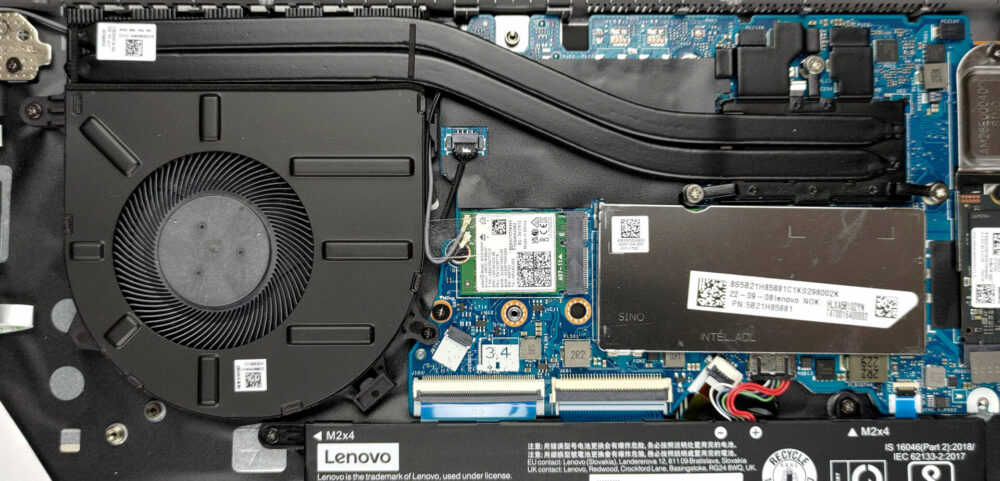




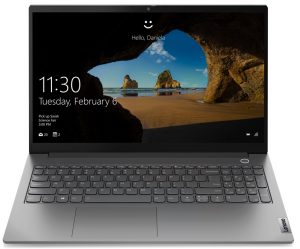
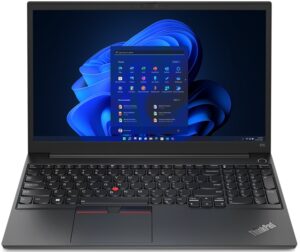








Hello. “Interestingly, despite the super low temperature, the ThinkBook 15 Gen 4 doesn’t want to boost the Core i5-1235U any higher than 2.55 GHz.”
What does this mean?
is this an internal problem or a power management one? (is it solvable?)
i want to buy this pc to connect to a 4k tv to stream movies. will this hinder my experience?